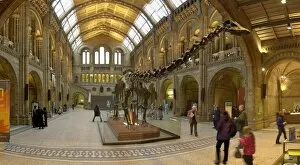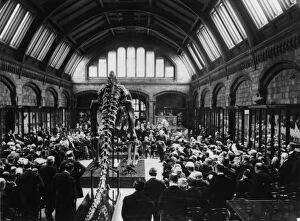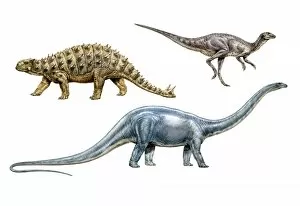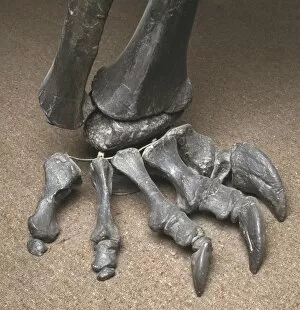Diplodocinae Collection
"Diplodocinae: Majestic Giants of the Central Hall at The Natural History Museum, London" Step into the awe-inspiring world of Diplodocus
All Professionally Made to Order for Quick Shipping
"Diplodocinae: Majestic Giants of the Central Hall at The Natural History Museum, London" Step into the awe-inspiring world of Diplodocus, as you wander through the magnificent Central Hall of The Natural History Museum. Amongst its grandeur stands a true marvel - Diplodocus carnegiei, an iconic dinosaur skeleton that has captivated visitors for generations. The towering presence of Diplodocus carnegiei is truly breathtaking. This colossal herbivore once roamed the Earth during the Late Jurassic period and now finds its eternal home in this prestigious museum. Its long neck and whip-like tail are meticulously preserved, offering a glimpse into prehistoric times. As you explore further, immerse yourself in a sketch presentation showcasing the intricate details of this remarkable creature. Marvel at how scientists have reconstructed Diplodocus carnegiei's immense size and unique features from fossil remains discovered across North America. The Central Hall serves as a fitting backdrop for this extraordinary exhibit. Nestled within the Waterhouse Building's architectural splendor, it creates an ambiance that transports you back to when these giants ruled our planet. Dive deep into history as you learn about Andrew Carnegie's significant contribution towards acquiring this incredible specimen for public display. His dedication to science and education enabled millions to witness firsthand the wonders of paleontology. Don't miss your chance to stand in awe before one of nature's most fascinating creations – Diplocodus carnegiei – housed within The Natural History Museum’s hallowed halls. Let your imagination run wild as you envision these gentle giants roaming ancient landscapes while appreciating their enduring legacy showcased here in all its glory.
















